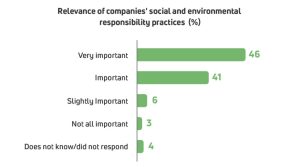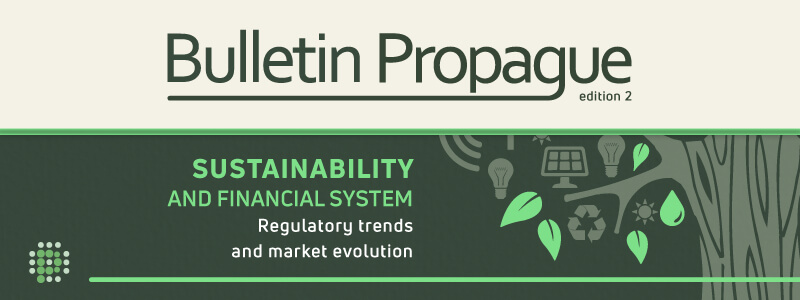The Central Bank of Brazil opened on April 7 a public consultation on a new regulation to improve how financial institutions manage risks associated with climate change, in addition to environmental and social impacts.
While environmental risk stems from the direct effects of human action on the environment, climate risk originates from extreme situations associated with global warming and the disruptive economic effects triggered by the transition to a low carbon economy.
The objective of the changes proposed by the Central Bank is to advance the BC# Sustainability strategic agenda in the National Financial System, aiming at the effectiveness of corporate responsibility policies associated with the social and environmental dimension.
The new rules do not prevent any kind of investment, nor do they oblige financial institutions to adopt specific environmental and social criteria (the letters E and S in the ESG acronym) in their operations. However, the Central Bank and the regulated institutions themselves will gain a more complete visibility over how climate change may affect the national financial system in the short, medium and long term.
The consultation will be available for public review for two months.
Climate change to gain prominence in financial risk management
The regulation proposed by the Central Bank redefines the requirements for risk management and mitigation for all segments of regulated institutions. What was previously treated in the Central Bank’s regulations as an ill-defined set of “socio-environmental risks” gains a new design.
The institutions will have to detail to the Central Bank, in addition to credit, operational, liquidity and other applicable risks, the new three specific categories:
Social risk
- Losses arising, directly or indirectly, from “events associated with practices of violation of fundamental rights and guarantees or acts harmful to collective interests”.
Environmental risk
- Losses associated with environmental degradation events and natural disasters caused by human action.
Climatic risk
- Physical climate risk: possibility of financial losses to the institution caused by extreme environmental conditions, such as droughts, hurricanes, floods and wildfires.
- Transition climate risk: possibility of losses to the institution resulting from the process of transition to a low carbon economy, with reduction or compensation of CO2 emissions.
Definition of climate risk for financial institutions according to the Central Bank
The text advanced by the Central Bank includes several items that institutions should monitor within the climate risk category under the new regulation. One example of transition risk is the devaluation of assets based on highly polluting activities, such as the oil and derivatives market and agricultural commodities associated with deforestation.
Another kind of risk arises from the possibility of changes in legislation or governmental action affecting the institution’s business, including taxation or prohibition of certain activities identified with high levels of pollution.
The Central Bank definition also includes among the transition climate risk events the negative perception of the financial market or the general public about the institution’s performance in the transition to a low carbon economy.
The proposed norm also reinforces the need for the risk management structure to identify and monitor the evolution of variables that can affect each risk category separately and the possible interconnections between all kinds of risks.
The Social, Environmental and Climate Responsibility Policy
The Central Bank is also consulting on replacing the rules for financial institutions’ Socio-Environmental Responsibility Policy, in place since 2014, with the Social, Environmental and Climate Responsibility Policy.
The change includes the new climate change dimension, which was not present in the 2014 text, and also enhances governance requirements to increase the effectiveness of the policies, which are defined by the institutions themselves according to their business model and exposure to environmental, social and climate risks.
Anbima‘s mapping shows that the adoption of social and environmental sustainability criteria by the financial sector in Brazil is still timid. However, a survey conducted by the banks’ association Febraban showed that the social and environmental responsibility of companies is considered very important by Brazilians, especially young people.

Source: Radar FEBRABAN, March 2021.
The recovery from the economic crisis in the post-pandemic is seen as an opportunity to rediscuss practices towards sustainability.
“The triad ‘social, environmental and climate’, which was already of concern to society, gained even more relevance with the Covid-19 pandemic, in the face of the expectation that economic recovery will be sustainable and inclusive, considering the acceleration of new technologies and changes in global value chains” says the Central Bank.
You might also like:



